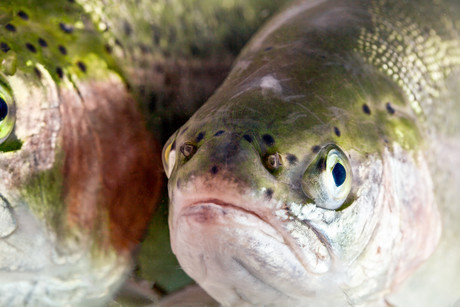What's going on in the Australian seafood industry

When people talk about seafood industry powerhouses, no-one brings up Australia. But after learning about these innovators and researching the island continent’s potential, I really wonder, why not?
A Tasmanian company has invented acoustics technology that feeds farmed shrimp and fish through sound. Other Australian ventures are working on turning abalone waste into bioactive pharmaceuticals, developing low-cost processes that clean fish-farming waters while nourishing commercial algae production and more original solutions to seafood challenges.
That Tasmanian company is already the world’s leading supplier of sensor-based feeding control technology for aquaculture. Australian universities are full of exciting seafood technology advances the rest of the world (and often even the rest of the country) has never heard of. And Australia’s advantages as a seafood producer — a comparatively pristine environment, premium wild and aquaculture species, and trusted quality — line up perfectly with what global consumer markets want right now.
Floating on the high end
Australia’s proximity to fast-growing Asian markets and favourable trade agreements with them position the country well for growth. In China especially, an expanding, seafood-loving middle-class values the safety, quality and sustainability of Australian seafood, and perceives it as a higher-status choice. Plus, Chinese import tariffs on Australian seafood will drop to zero by 2019.
The value of Western Australia’s Marine Stewardship Council-certified Rock Lobster fishery rose 131% in real terms from 2006 to 2016 — entirely through price increases at its main markets in Japan, Hong Kong and mainland China, rather than through increased catches. And Tasmanian Atlantic-farmed salmon — worth AU$718 million in 2016 — fetches a higher price in Asian markets than Norwegian farmed salmon, trading on Tasmania’s clean and green reputation and great year-round conditions. In fact, Australia is an aquaculture pioneer: the country invented tuna ranching and is now working to improve the method’s sustainability, as well as to successfully and sustainably farm other high-value species, such as Cobia (rich in omega-3), Queensland Giant Grouper and Yellowtail Kingfish.
Solving the mass-luxury conundrum
The Australian seafood sector is poised at a delicate point. The country’s Fisheries Research and Development Corporation (FRDC) would like to see “innovation so audacious that it helps double the value and volume of sustainable seafood in Australia in the coming decade”. To do that while maintaining the assets that support Australian seafood’s price premium — high quality, clean conditions and sustainable production — is going to require technological and marketing leaps forward, along with stronger connections between innovative seafood ventures and investors.
I believe that the country’s seafood sector is well positioned to master the challenges of responsible growth. A lot of innovation is happening here — in aquaculture disease control, waste management, feeds, production systems and other areas. Australia also has abundant opportunities for value growth in underused species that could be sustainably harvested, like Australian Salmon, sardines and mackerel. Many of these species are in demand, but the industry needs to develop supply chains and creative marketing strategies for both domestic and Asian markets.
The missing piece is connections for Australian seafood entrepreneurs with investors and international partners that can help them expand their reach to premium markets. FRDC is sponsoring an Australia track in the 2018–2019 Fish 2.0 competition for sustainable seafood businesses in a bid to give up-and-coming ventures the opportunity to form those essential relationships.
Building the right connections
The other good news is that there’s plenty of capital in Australia to support a breakout sustainable seafood sector. The impact investment movement is growing fast here: Australian impact investment products more than quadrupled from AU$1.2 billion in June 2015 to AU$5.8 billion by December 2017, according to Australia’s Impact Investment Group. We just have to connect these investors with the exciting ventures and ideas currently siloed in university departments and narrow supply chains. The Fish 2.0 Australia track is all about bringing these people together and introducing them to a global community.
Australia is primed to take a huge role in driving the global sustainable seafood sector forward, and the opportunities are clear. When investors, entrepreneurs and industry leaders connect to support supply chain, technology and market innovations, the nation will burst onto the world seafood stage.
Hygienic design for food production automation systems
Integrated Automation Limited (IAL) has set a new benchmark in food production by standardising...
Aussie-built AI aims to solve disconnect issues for food manufacturers
An Australian-built AI solution designed to break down communication blocks between manufacturing...
Parsnip automation project optimises operational efficiency
Faced with increasing difficulty sourcing labour, Frederick Hiam partnered with Wyma Solutions to...














